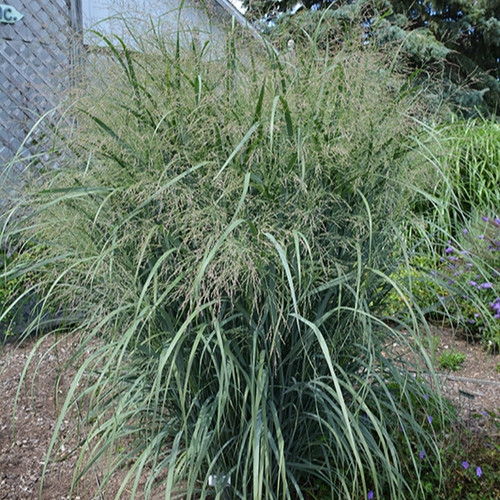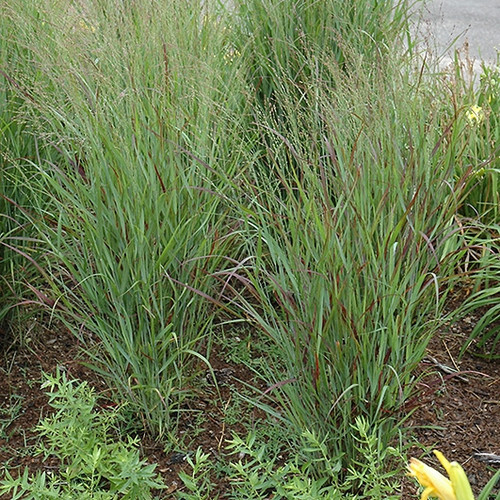| Panicum virgatum 'Ruby Ribbons' | USDA Zone: 4-9 |
Ruby Ribbons Switch Grass features airy plumes of purple flowers with pink overtones rising above the foliage in late summer. Its attractive grassy leaves emerge bluish-green in spring, turning red in colour with prominent deep purple tips. As an added bonus, the foliage turns a gorgeous coppery-bronze in the fall. The brown seed heads are carried on showy plumes displayed in abundance from late summer to mid fall. The tan stems can be quite attractive.
This colorful mid-sized selection forms an upright clump of blue green foliage that matures to coppery-red with deep purple tips; airy heads of mauve-pink flowers appear on plumes in summer; perfect as an accent or massed in borders.
Ruby Ribbons Switch Grass is recommended for the following landscape applications;
- Accent
- Mass Planting
- General Garden Use
Attracts Birds
Deer Resistant
Low Maintenance
Salt Tolerant
Drought Tolerant
Companion Plants: Salvia, Shasta Daisy, Tickseed, Sedum, Blanket Flower
Common Name: Switch Grass, Ornamental Grass
|
Key Feature
|
Light Needs | Landscape Uses |
 |
 |
|
|
|
|
| More About Ruby Ribbons Switch Grass |
| Height: 3 ft |
Spread: 4 ft |
Flower Colour: Pink Shades |
|
Ruby Ribbons Switch Grass does best in full sun to partial shade. It is very adaptable to both dry and moist locations, and should do just fine under typical garden conditions. It is considered to be drought-tolerant, and thus makes an ideal choice for a low-water garden or xeriscape application. It is not particular as to soil type, but has a definite preference for alkaline soils, and is able to handle environmental salt. It is somewhat tolerant of urban pollution. Switch grass gets its name from the peaceful swishing sound it makes when blowing in the wind. All parts of this grass are very sturdy, and will remain standing thru winter unless snows are heavy. This provides important cover for birds during the coldest days of winter. This grass is very versitile from a design standpoint; it is effective as a specimen, in masses, for screening, alongside ponds or streams, or even in large containers. Warm Season Grasses: These grasses are much slower starting in the spring. They do not push new growth until temperatures warm in early to midsummer. They flower later in the summer or fall with most blooms remaining into the winter. Most warm season grasses tolerate heat, humidity and drought; some even thrive in these conditions. Note that when grown in a container, it may not perform exactly as indicated on the tag - this is to be expected. Also note that when growing plants in outdoor containers and baskets, they may require more frequent waterings than they would in the yard or garden. Be aware that in our climate, most plants cannot be expected to survive the winter if left in containers outdoors, and this plant is no exception. NOTE: Some flowers and plants may be harmful or poisonous to people or pets if touched or ingested. If you require more information before placing an order, please let us know in advance. |











